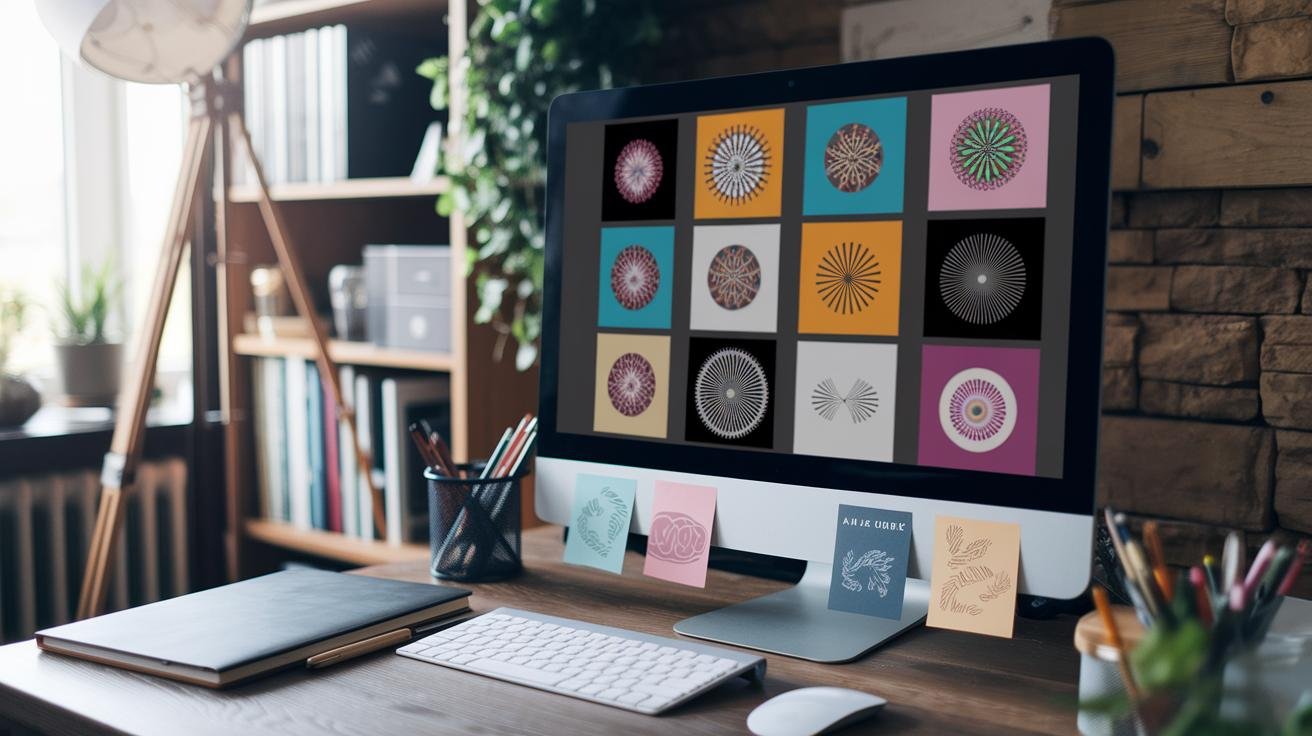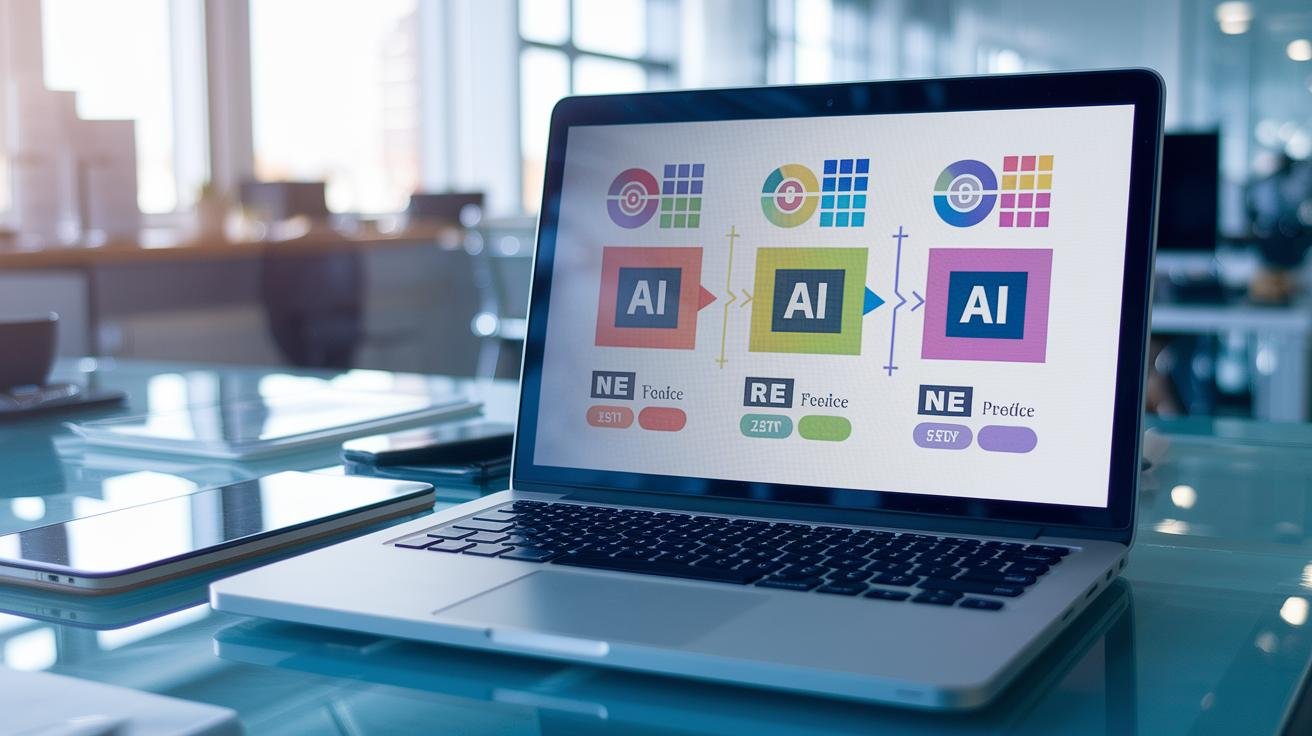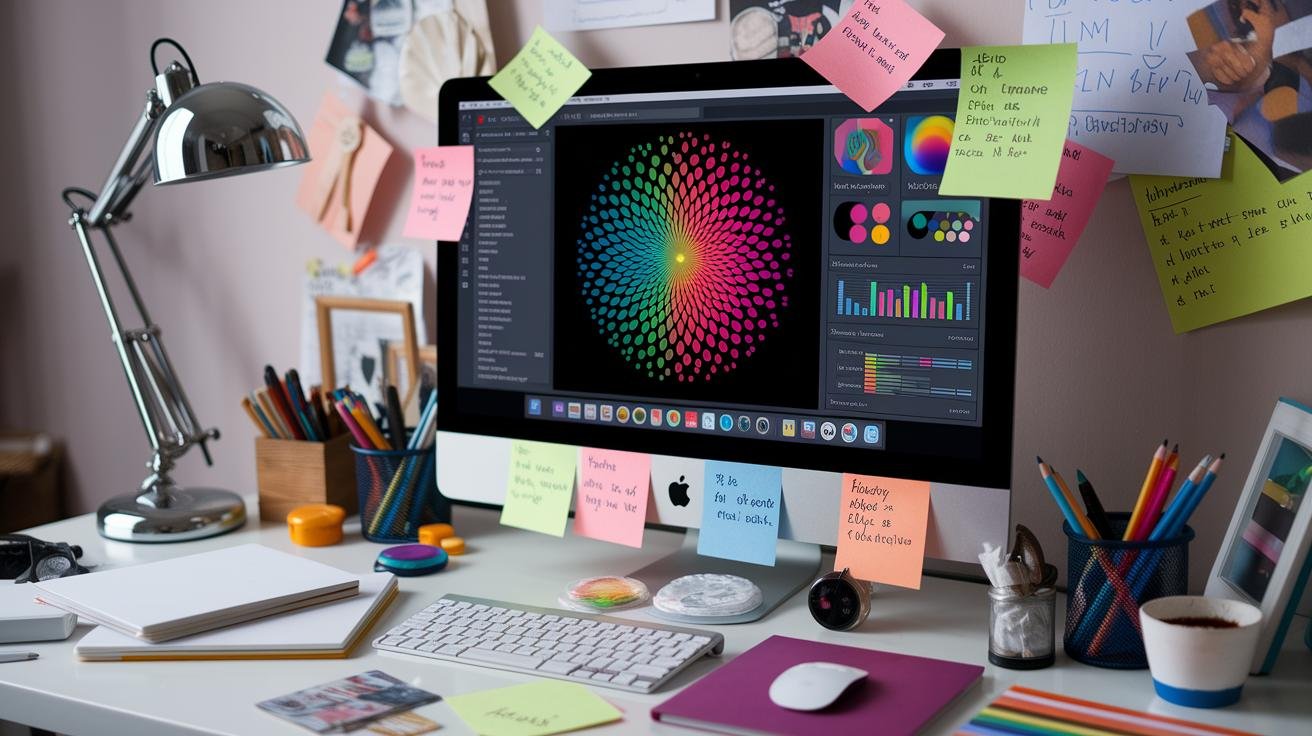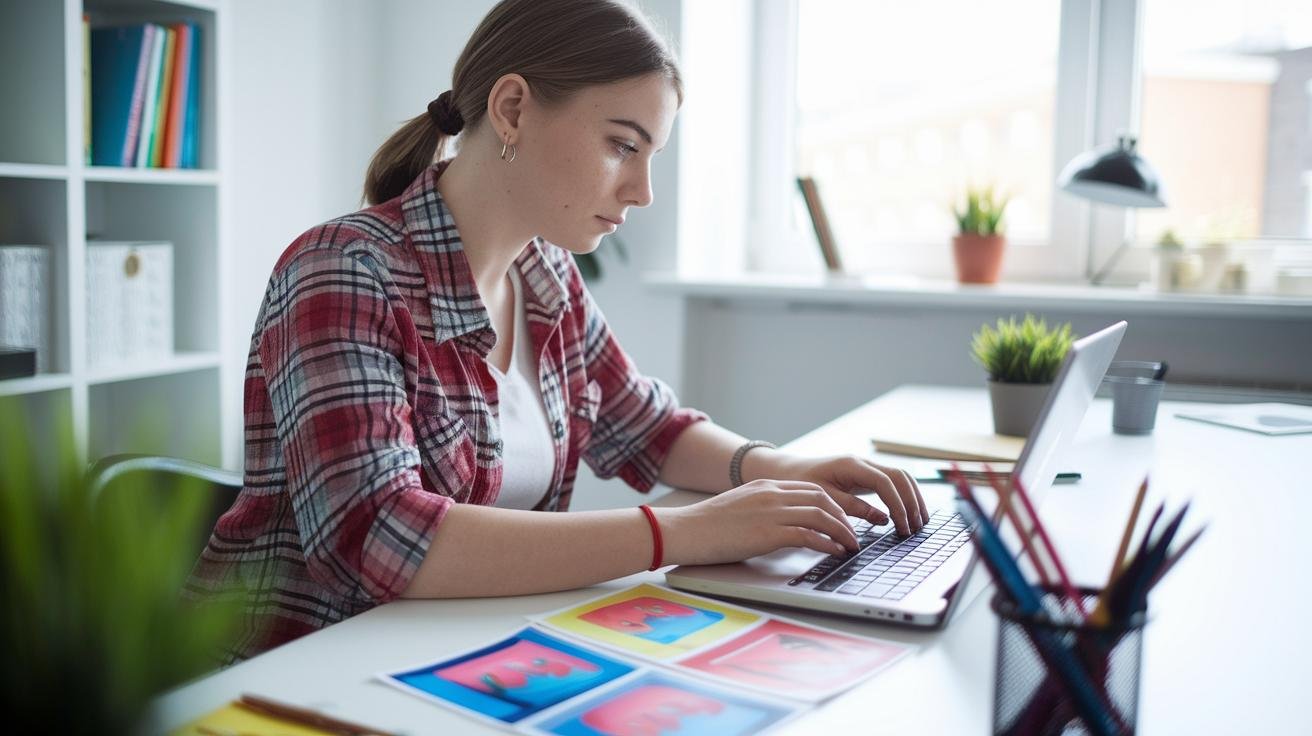Think your graphics are as sharp as they get? Maybe it’s time to raise the bar.
AI (artificial intelligence) image creation tools could totally change how you see quality. We ran the same prompt through five top platforms.
Here’s who joined the showdown:
- Midjourney
- Stable Diffusion
- Adobe Firefly
- Shutterstock AI
- DALL·E 3
We scored each one on image clarity, prompt accuracy, ease of use, and editing tools. The results ranged from studio-grade masterpieces to royalty-free stock shots.
Impressive.
Ready for visuals that make people pause mid-scroll? Let’s find the perfect AI sidekick for your brand.
AI Image Creation Tools at a Glance

We tested sixteen top AI (artificial intelligence) image creation tools with the same prompt. They’re the second most popular AI use case after large language models (systems that generate text). We watched each platform juggle four main metrics: image quality, sticking to your prompt, ease of use, and extra features.
- Midjourney and Imagen 3 serve up the cleanest, most detailed images and stick to your prompts. They’re ideal when you need polished designs fast.
- Stable Diffusion and Adobe Firefly shine with built-in editing features. You get in-painting (filling or touching up parts of an image), control over camera angles, and custom color palettes.
- Shutterstock AI and Getty Images/iStock AI focus on royalty-safe, stock-style images with built-in legal protection. You can feel confident using them for ads or brochures without worrying about copyright.
- DALL·E 3 (in ChatGPT Plus) and GPT-4o score high on prompt understanding and privacy. They default to private outputs and even have basic editing tools to tweak your final image.
- Freepik and Pixlr pack multiple AI models under one subscription with generous trial credits. They’re an easy, low-risk way for marketers to jump in and experiment.
Next, we’ll dive into pricing, feature breakdowns, and real-world workflows so you can pick the right tool for your needs.
Feature and Pricing Comparison of AI Image Creation Tools

We’ve put together an easy side-by-side look at the top AI image generators.
Below, you’ll find each tool’s free tier, cost options, and what kind of commercial rights you get.
| Tool | Free Tier | Paid Plans & Cost | Commercial Rights |
|---|---|---|---|
| Adobe Firefly | 25 credits per month | Premium: $4.99/month for 100 credits and watermark removal | License included |
| Midjourney | None (no free trial) | Basic: $10/month (~200 images); Pro: $60/month; Mega: $120/month | Royalty-free assets |
| DALL·E 3 | 3–5 images/day with ChatGPT Plus | ChatGPT Plus: $20/month (extra credits available) | Royalty-free commercial rights |
| Freepik | 20 credits | Pro: $9.99/month for 120 credits | Royalty-free assets |
| Pixlr | 250 credits over 7 days | Starts at $5/month for subscriptions or one-time packs | Royalty-free commercial use |
| Leonardo.AI | 25 tokens | Plans start at $7.99/month | Commercial license |
| Flux AI | 5 images/day | Pay-as-you-go API pricing | You keep commercial rights |
In-Depth Reviews of Leading AI Image Creation Tools

Adobe Firefly
Adobe Firefly still shines in 2025. It gives you precise camera angle controls, custom color palettes, and seamless generative fill (auto-filling gaps) and expand (growing your canvas) tools. Onboarding feels smooth, you can go from sketch to polished export in minutes.
It hooks right into Photoshop and Express, so your photo edits and mockups happen faster. Text prompts can still jumble letters, so you’ll want to plan a quick touch-up after generation.
Midjourney
Midjourney is a go-to for designers craving rich textures and community style tags. You jump in through Discord or the web app, but there’s no free trial, Basic is $10/month, while Pro and Mega give you more image runs each month.
Once you master advanced prompts, we think upscaling, remixing, and keeping characters consistent feel like superpowers. But if you’re new, the learning curve can feel steep without sample prompts.
Freepik
Freepik brings Flux, Ideogram, and Google’s Imagen model together under one roof. You get 20 free credits to try different styles and effects, then Pro at $9.99/month gives you 120 credits.
Its layered interface is intuitive, so marketers can whip up blog hero images or social ads in a flash. It’s the perfect free trial for AI image creation without juggling multiple logins.
Dreamstudio
Dreamstudio leans on the Phoenix model to deliver crisp fantasy and portrait art. In our tests, think cyborgs and period pieces, we saw top-quality outputs.
Server load can slow you down, and there’s no free trial. You’ll need to buy credits to explore, but if you don’t mind a short wait for high-fidelity visuals, it’s a solid pick.
Ideogram
Ideogram’s magic prompt (a boost for your text) helps you get cleaner results and offers five distinct art styles. Its friendly interface walks AI newcomers through anime, cartoon, and realistic modes.
You start with paid credits, no free rides here, but you’ll save time tweaking prompts. It’s ideal for quick character designs and social graphics.
Stable Diffusion
Stable Diffusion is all about customization, you choose sampling steps, in-painting masks (for editing parts of an image), and upscaling kernels (for sharper details). We noticed it follows your prompts closely, though you might spot odd “AI fingers” in tight shots.
Community interfaces like AUTOMATIC1111 and NightCafe make it easy to use without coding. It’s best for teams that want deep pixel-level control and don’t mind a bit of setup work.
DALL·E 3
DALL·E 3 gives ChatGPT Plus subscribers three to five free images a day and nails style blending. Your creations stay private by default, and you can in-paint or upscale right in the chat window.
You might spot text artifacts or funky angles sometimes, but the in-app tools make fixes quick. For a deeper look at choosing the right image generator AI, see our AI image generator deep dive.
Best Practices for Effective AI Image Creation

We’ve all seen AI images that either stun or totally miss the mark. You can nail yours by following these simple steps.
-
Start with Style + Subject.
We call this prompt engineering (guiding the AI). Pick a subject, like “urban skyline”, and a style, say “neon noir painting.” -
Add Background, Color Palette, and Details.
Layer in context such as a moonlit sky, deep blues, and floating fog. These extra bits turn basic text into vivid visuals. -
Use negative prompts (telling the AI what to avoid).
Spell out what you don’t want, no extra limbs, no text fragments, to cut out weird glitches. -
Iterate Fast.
Tweak one thing at a time: lighting, perspective, or phrasing. Each run is a test, so you sharpen your results quickly. -
Combine workflows.
Start with your base image, then try neural style transfer (applying art styles to photos) or image-to-image translation (using one image to refine another). This final polish boosts texture and cohesion.
API Integrations and Workflow Automation with AI Image Generators

Imagine you ask for a product shot or custom social graphic, and your app delivers it in seconds. That’s AI image creation (using smart software to make visuals) plugged into your workflow. We set it up so resizing, styling, or spinning up images happens automatically. You skip manual tasks and focus on strategy.
OpenAI API
The OpenAI API (application programming interface) lets you send a text prompt to DALL·E (OpenAI’s AI image tool) and get back a URL or a base64-encoded image (that’s a way to wrap an image in text). You can use the official JavaScript SDK (software development kit) or the Python client library. A full call takes under ten lines of code.
Don’t forget rate limits (max calls per minute). If you’re generating dozens of images, add retry logic or queue requests so you don’t hit a wall.
Replicate API
Replicate offers a simple REST interface (a way for apps to talk over the web) to hundreds of models, including Stable Diffusion variants. You swap in your API token, set your style and subject prompt, then hit go. A minimal snippet runs in 8–12 lines.
• Use the JavaScript SDK for Node.js apps.
• Or grab the Python client for data pipelines.
• Replicate’s rate-limit headers tell you when to slow down, no guessing needed.
Zapier Automation
Zapier blends webhooks and prebuilt actions to link your favorite tools. With no code, you can:
• Watch Slack for “generate image” messages and fire them to DALL·E or Replicate
• Hook into Google Forms or Airtable records
• Drop finished images into your inbox, a shared folder, or directly into your CRM
It’s like having a virtual assistant that never sleeps.
By tying these APIs and automations together, you get images on autopilot, no extra overhead or waiting. You stay focused on big ideas, and we handle the pixels.
Real-World Use Cases for AI Image Creation Tools

Here are a few ways teams use AI (artificial intelligence) image creation tools to speed up work and spark new ideas.
-
A content agency tapped Adobe Firefly’s marketing asset automation to generate hero images for its weekly newsletter. The generative fill feature (auto-fills backgrounds and adjusts lighting) worked in seconds. Designers got more time for big creative projects.
-
A boutique brand tried out free ai image generators (tools that create images from text). They used them to craft Instagram carousel posts. The low-cost start let them test styles, keep their feed consistent, and engage followers without new hires.
-
An e-commerce shop used Freepik’s product mockup tool (layers designs for quick previews) to preview new gear. In under five clicks, they mixed character poses, color palettes, and props. Rough ideas turned into ready-to-share ads in minutes.
-
An interior design studio sped up client proposals with Midjourney (an AI art generator). They dropped room photos into prompts, played with furniture styles, and delivered three concepts in one afternoon.
-
A game developer sketched basic character concepts, applied fantasy textures, and refined details with Stable Diffusion (an AI image model) on NightCafe. In-painting (editing parts of an image) cut their concept-to-play-test time by half.
-
A subscription box service personalized thank-you cards using DALL·E 3 (an AI image generator) for in-painting and style blending. Each card matched a subscriber’s favorite color theme. Unboxing delight and social shares shot up.
Ethical, Legal, and Quality Considerations in AI Image Creation

When you use AI (artificial intelligence) to craft images, you also become responsible for how they’re shared and used. The U.S. Copyright Office says images made only by machines don’t get legal protection unless there’s meaningful human input, like edits or clear directions. And because training-data licensing (rules about the examples the model learned from) is still up in the air, you could inherit hidden risks if the model learned from someone else’s copyrighted work.
Tools like Flux AI and Pixlr promise privacy-preserving models (they keep your work private and ensure you own every pixel). But many platforms still default to public galleries or shared libraries, so your images might end up out in the open.
AI can sneak in bias or weird glitches. Like faces that hover in the uncanny valley or odd angles that throw you off. Yikes. That’s why we start with ethical AI prompt rules (guidelines on what to ask the model) and then run bias-mitigation techniques (simple checks to catch stereotypes or distortions).
Next, use AI-generated content detection tools (software that flags machine-made images). They’re getting better, but they can still miss artifacts or false text. Then, wrap it up with a final human review: look closely at every detail, test your images with real users, and tweak before you launch. Results matter.
Here’s how you stay on the right side of the law and keep quality high:
- Document copyright compliance: record your edits, credits, and model licenses.
- Pick privacy-preserving models that give you exclusive ownership of your work.
- Run bias-mitigation steps: check gender, race, and cultural cues for unwanted stereotypes.
- Use AI-generated content detection tools to flag unexpected machine artifacts or false text.
- Do quality checks: review perspective, fix any uncanny features, and make sure the resolution meets your publishing specs.
Final Words
In this post, we jumped straight into the world of AI image creation tools, testing 16 leading platforms for quality, ease of use, and pricing. We broke down each feature set, fee structure, and pro-cons under clear subheadings.
Then we drilled into prompt tips, API workflows, and real-world examples, from marketing assets to product mockups. We also flagged legal and bias checks so you can stay compliant.
Pick the right AI image creation tools and watch your visuals scale with minimal effort.
FAQ
What free AI image creation tools are available online?
Free AI image creation tools available online include Bing Image Creator for text-to-image, DALL·E 3 via ChatGPT with daily credits, Stable Diffusion web UIs, Flux AI’s daily generations, and Freepik’s free credits.
What is Bing Image Creator and how does it work?
Bing Image Creator is an online AI tool powered by DALL·E that generates images from text prompts, offering up to 100 free creations per month and instant, high-quality visuals for marketing or prototypes.
How do I generate AI images from an existing image?
Generating AI images from an existing image involves uploading your photo into tools like Stable Diffusion or Adobe Firefly, then using image-to-image translation to remix style, add backgrounds, or adjust colors.
How do I create AI images from text prompts?
Creating AI images from text prompts means entering descriptive phrases into generators like Midjourney, DALL·E 3, or Stable Diffusion web UIs, then refining style and composition until you get the right visual.
Which are the best AI image creation tools?
The best AI image creation tools include Midjourney for artistic renders, Adobe Firefly for advanced controls, DALL·E 3 for text precision, Stable Diffusion for customization, and Freepik for stock-style assets.






